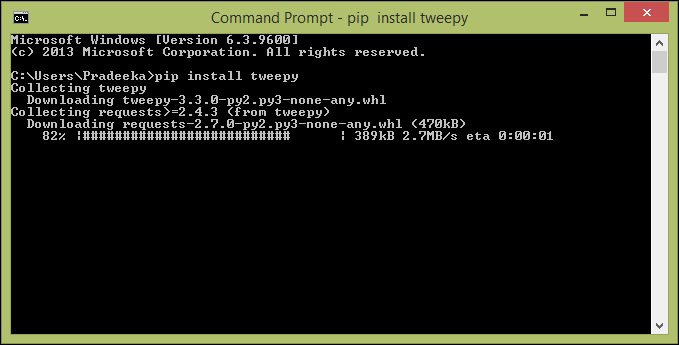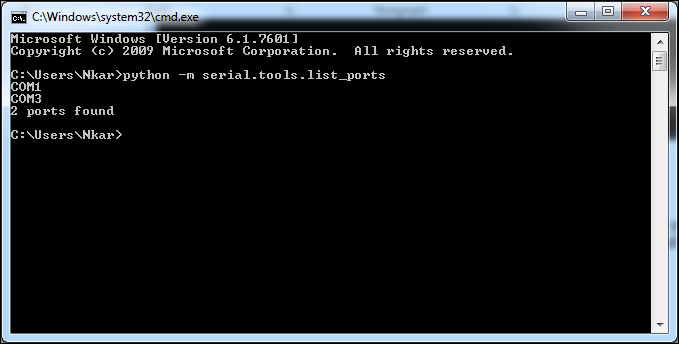Python is an interpreted, object-oriented, and high-level computer programming language with very powerful features that's easy to learn because of its simple syntax. For this project, we can easily write an interface between Twitter and Arduino using the Python script.
The following steps will explain how to install Python on a Windows computer:
- Visit https://www.python.org/.
- Click on Downloads | Windows.
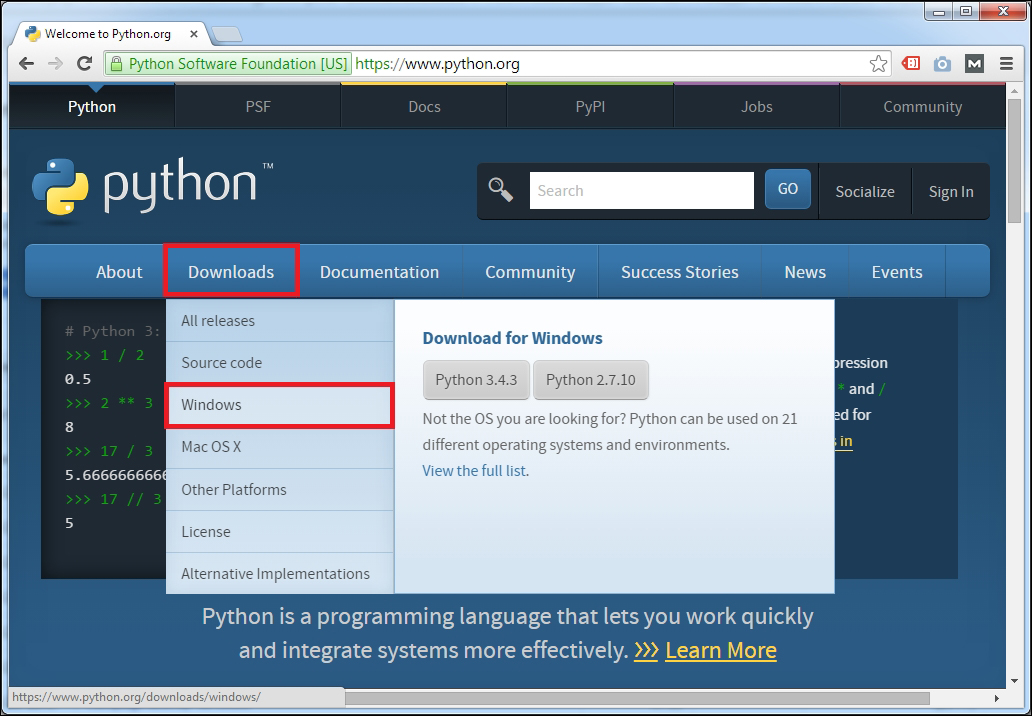
The Python home page
- Then, you will navigate to the Python Releases for Windows web page:

The Python download page
- Python can be downloaded from two development branches: legacy and present. The legacy releases are labeled as 2.x.x, and present releases are labeled as 3.x.x. (For reference, the major difference of 2.7.x and 3.0 can be found at http://learntocodewith.me/programming/python/python-2-vs-python-3/). Click on the latest (see the date) Windows x86-64-executable installer to download the executable installer setup file to your local drive under Python 3.x.x.
- Alternately, you can download a web-based installer or embedded ZIP file to install Python on your computer.
- Browse the default
Downloadsfolder in your computer and find the downloaded setup file. (My default downloads folder isC:Downloads). - Double-click on the executable file to start the setup:
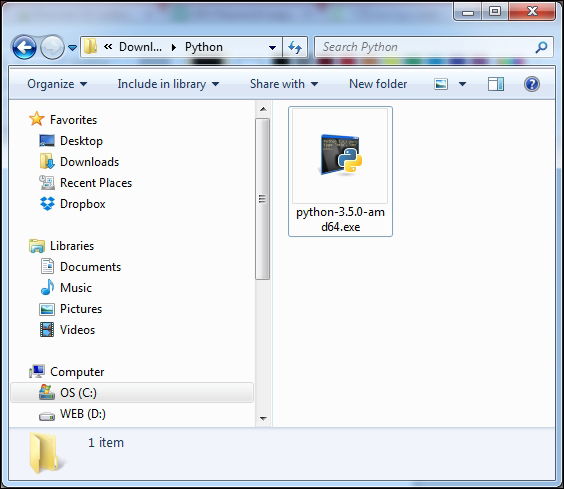
The Python setup
- Click on the Run button if prompted as a security warning:
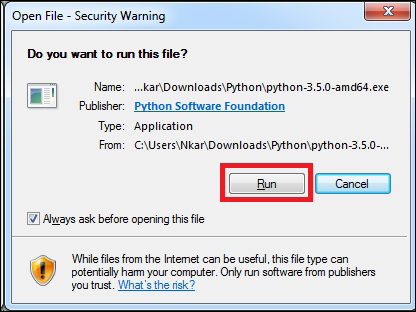
Security warning
- The Python setup wizard starts:
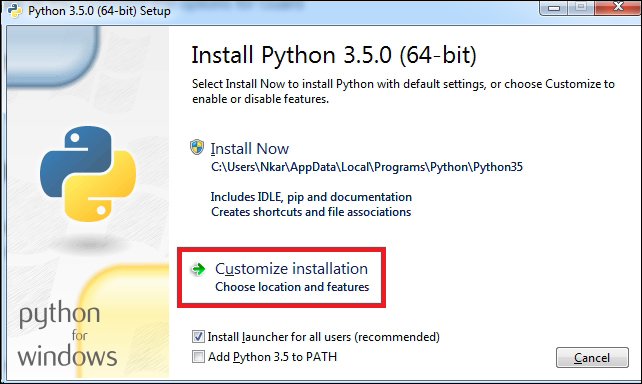
The Python setup wizard—start screen
- Optionally, you can check Add Python 3.5 to PATH, or later, you can add it using Windows system properties. Click on the Customize installation section. The Optional Features dialog box will appear:

The Python setup wizard—Optional Features
- Click on the Next button to proceed. The Advanced Options dialog box will appear. Keep the selected options as default.
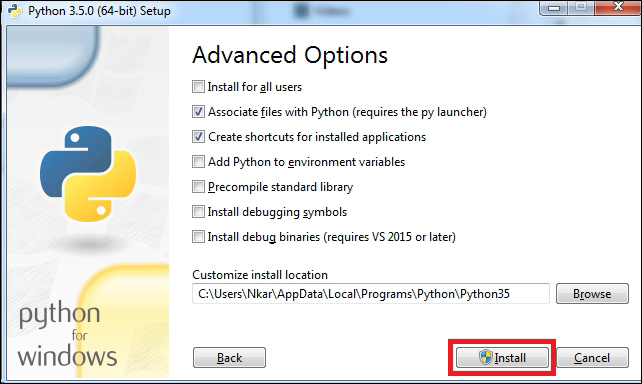
The Python setup wizard—Advanced Options
- The default installation path can be found under Customize install location. If you like, you can change the installation location by clicking on the Browse button and selecting a new location in your computer's local drive.
- Finally, click on the Install button.
- If prompted for User Access Control, click on OK. The Setup Progress screen will be displayed on the wizard:

Python setup installation progress
- If the setup is successful, you will see the following dialog box. Click on the Close button to close the dialog box:

The Python setup is successful
If you have already set to Add Python 3.5 to PATH for writing the environment variables during the Python setup installation process, ignore this section. If not, then follow these steps to set environment variables for Python.
- Open the Windows Control Panel and click on System. Then, click on Advanced system settings.
- The System Properties dialog box will appear. Click on the Advanced tab. Then, click on the Environment Variables… button:
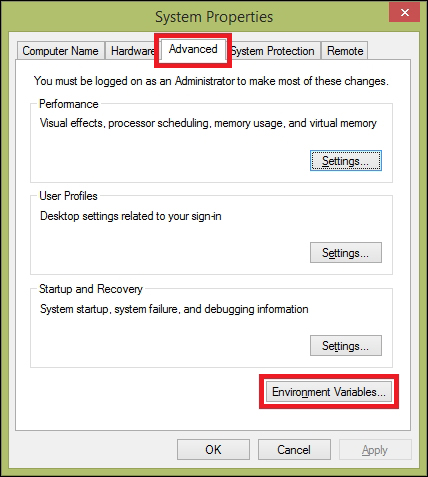
The System Properties dialog box
- The Environment Variables dialog box will appear. Click on the New… button under user variables:
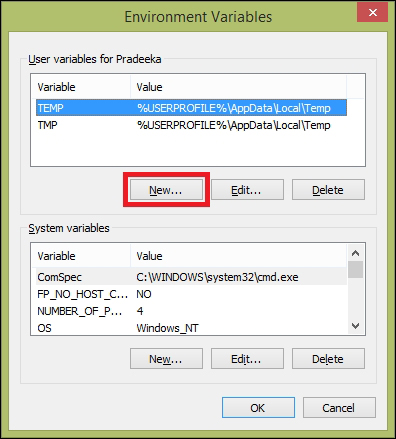
The Environment Variables dialog box
- The New User Variable dialog box appears:
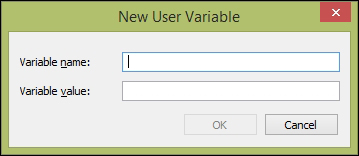
The New User Variable dialog box
- Type the following for the respective textboxes:
- Variable name:
PATH - Variable Value:
C:UsersPradeekaAppDataLocalProgramsPythonPython35;C:UsersPradeekaAppDataLocalProgramsPythonPython35Libsite-packages;C:UsersPradeekaAppDataLocalProgramsPythonPython35Scripts;
Modify the preceding paths according to your Python installation location:

The New User Variable dialog box
- Variable name:
- Click on the OK button three times to close all the dialog boxes.
- Open Windows Command Prompt and type
python, and then press the Enter key. The Python Command Prompt will start. The prompt begins with>>>(three greater than marks):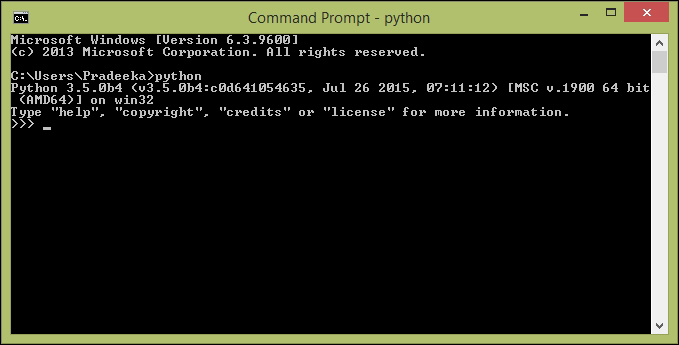
Python Command Prompt
This ensures that the Python environment variables are successfully added to Windows. From now, you can execute Python commands from the Windows command prompt. Press Ctrl + C to return the default (Windows) command prompt.
The setuptools utility lets you download, build, install, upgrade, and uninstall Python packages easily. To add the setuptools utility to your Python environment, follow the next steps. At the time of writing this book, the setuptools utility was in version 18.0.1.
- Visit the
setuptoolsdownload page at https://pypi.python.org/pypi/setuptools. - Download the
ez_setup.pyscript by clicking on the link (https://bootstrap.pypa.io/ez_setup.py):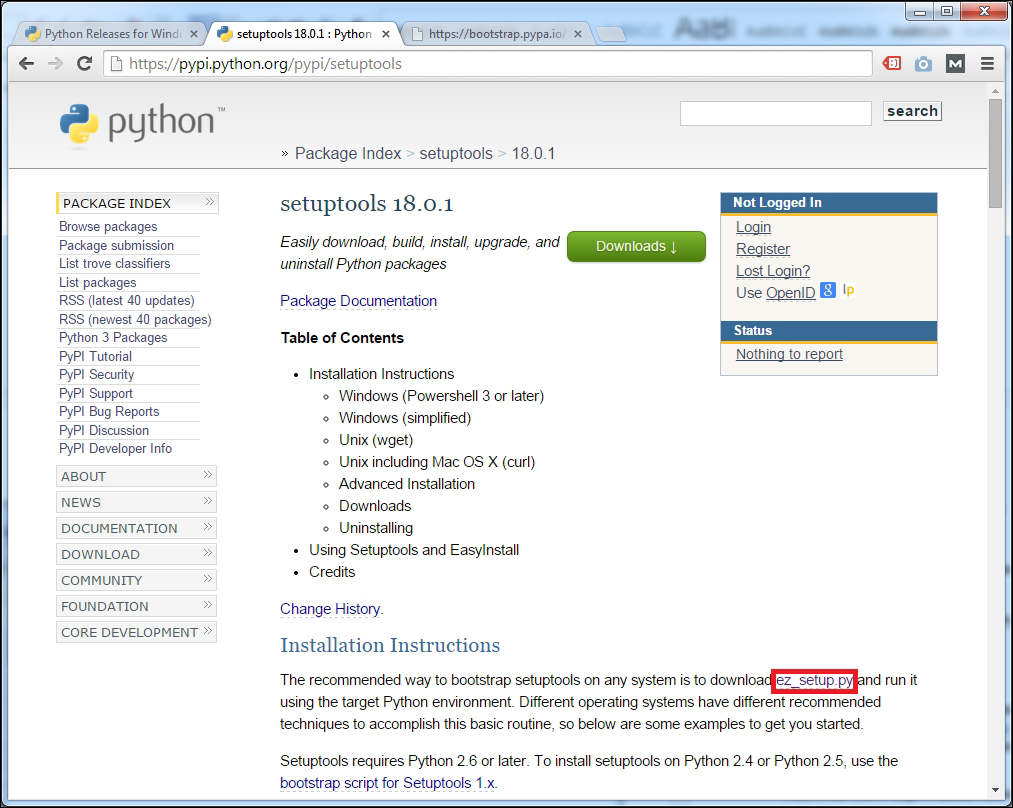
The setuptools download page
- The script opens in the browser's window itself, rather than downloading as a file. Therefore, press Ctrl + A to select all the code and paste it on a new Notepad file:
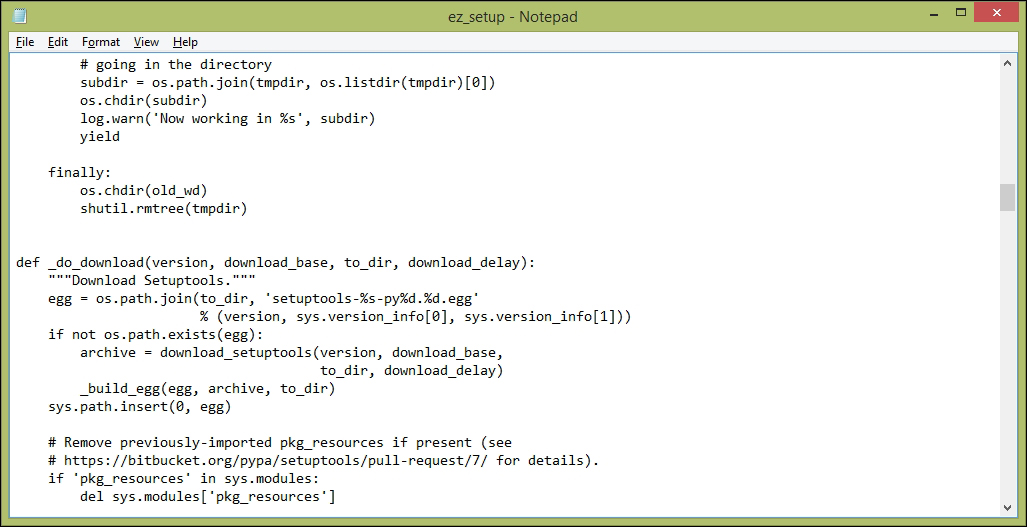
- Next, save the file as
ez_setup.pyin your local drive.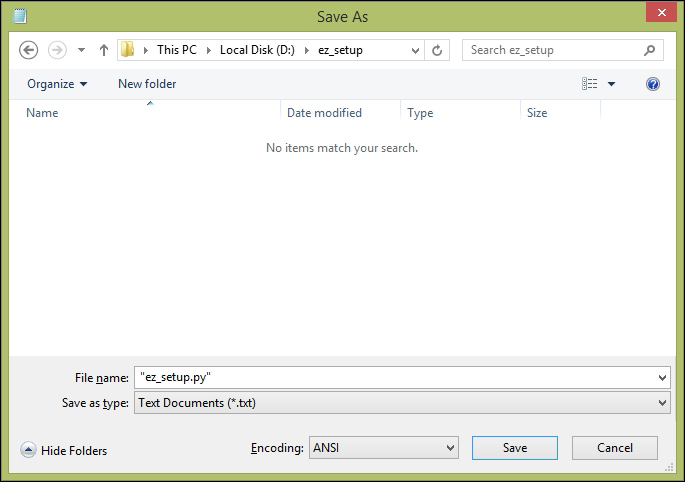
- Open Windows Command Prompt and navigate to the location of the
ez_setup.pyfile using thecdcommand. We assume that the drive is labeled as the letterD:, and the folder name isez_setup:C:>D: D:>CD ez_setup
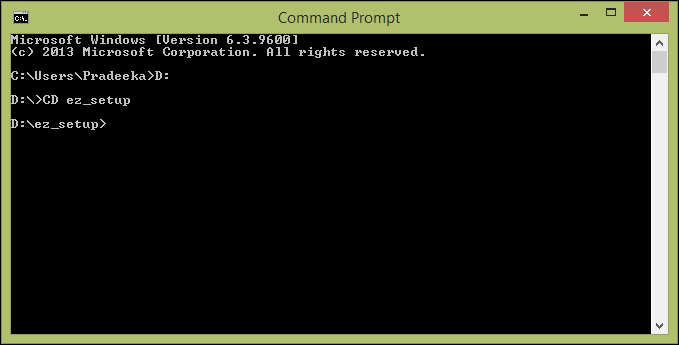
- Type
python ez_setup.pyand press the Enter key to run the Python script: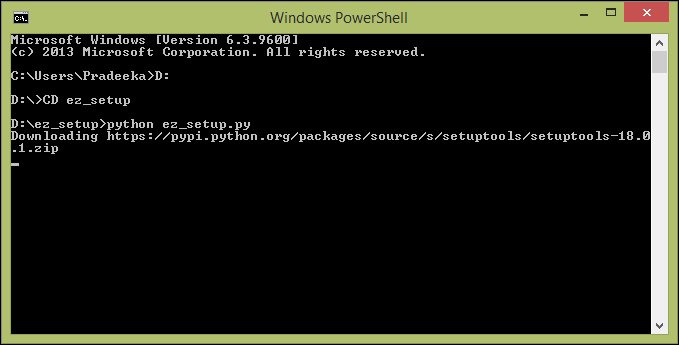
This installs the easysetup utility package on your Python environment:
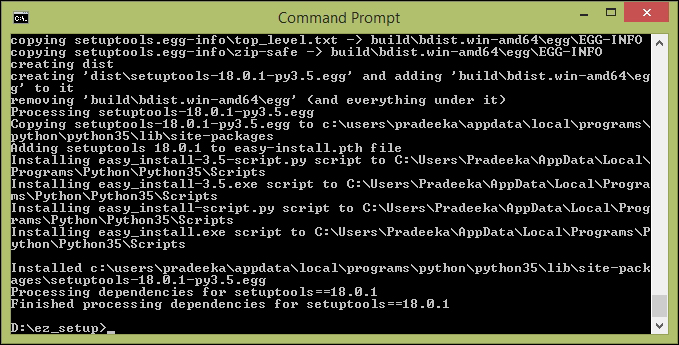
The pip utility package can be used to improve the functionality of setuptools. The pip utility package can be downloaded from https://pypi.python.org/pypi/pip. You can now directly install the pip utility package by typing the following command into Windows Command Prompt:
C:> easy_install pip
However, you can ignore this section if you have selected pip, under Optional Features, during the Python installation.
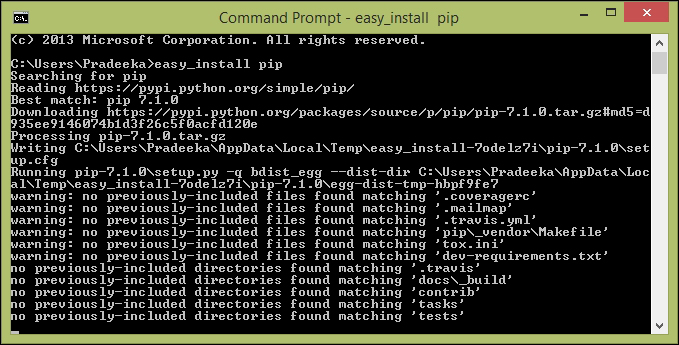
Follow these steps to open the Python interpreter:
- Open Command Prompt and type the following:
C:> Python - This command will load the Python interpreter:

To exit from the Python Interpreter, simply type exit() and hit the Enter key.
The Tweepy library provides an interface for the Twitter API. The source code can be found at https://github.com/tweepy/tweepy. You do not have to download the Tweepy library to your computer. The pip install command will automatically download the library and install it on your computer.
Follow these steps to install the Python-Twitter library on your Python installation:
- Open the Windows command prompt and type:
C:>pip install tweepy - This begins the installation of the Tweepy library on Python:
